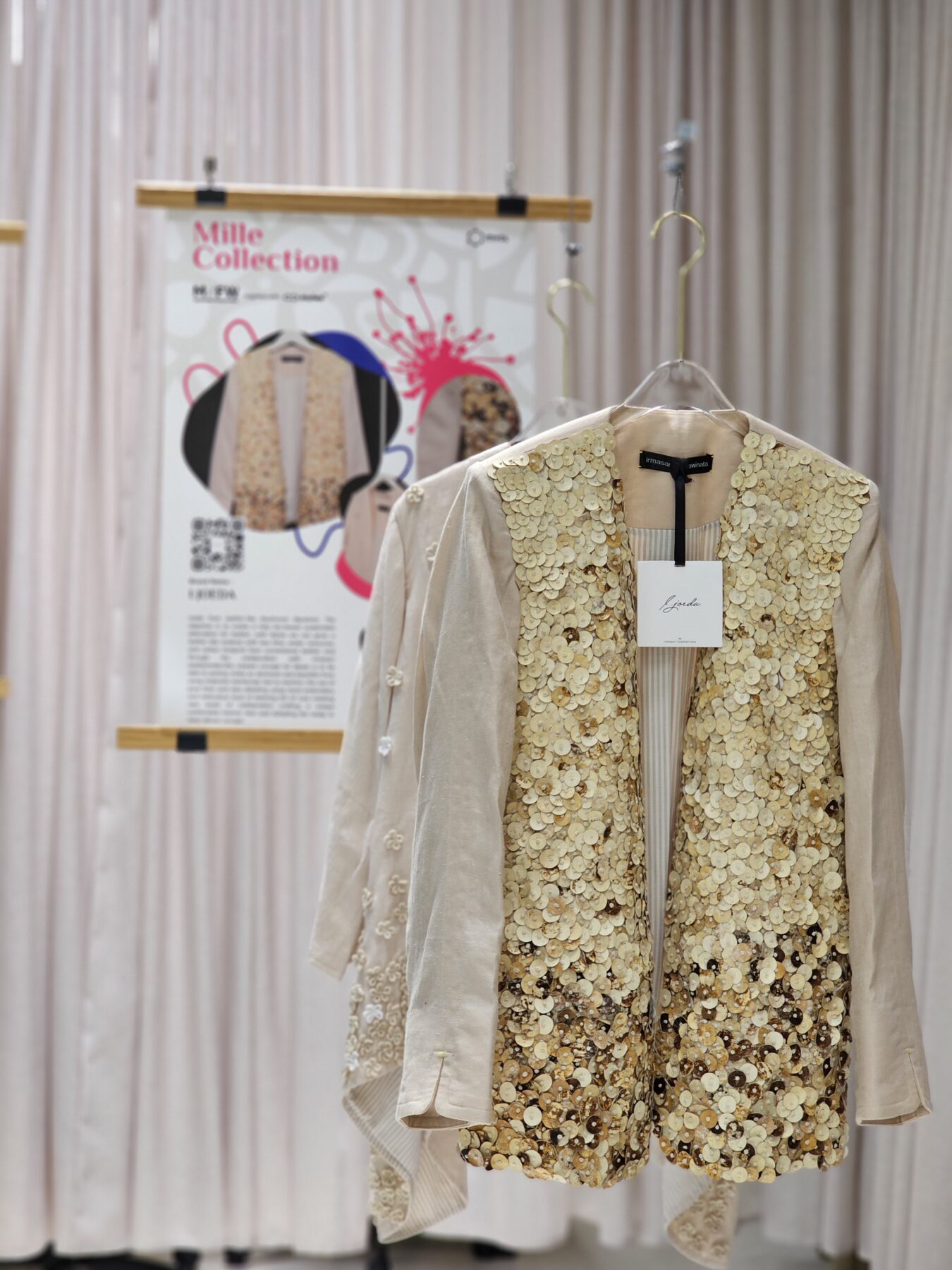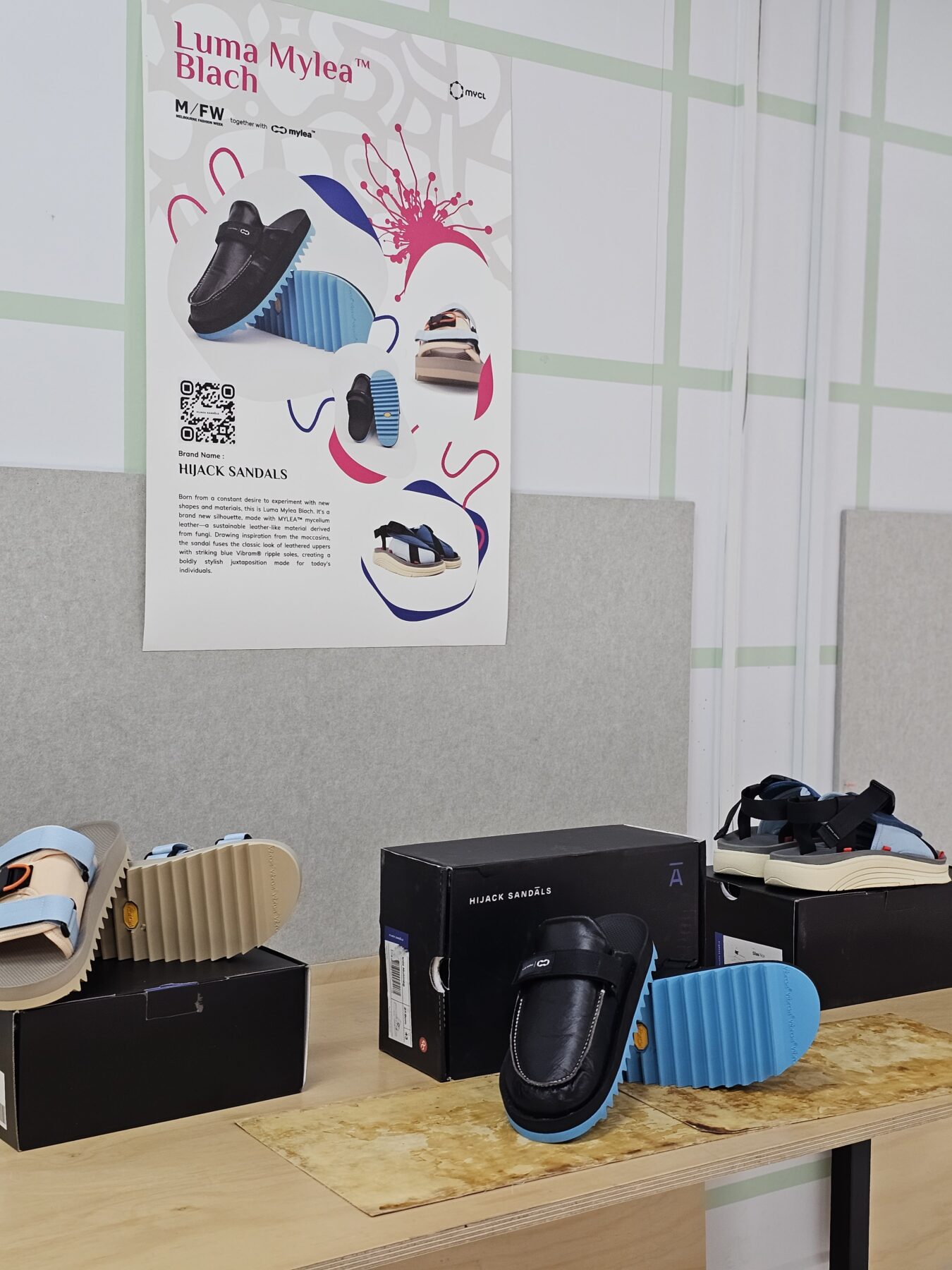Fungi fashion featured at Melbourne Fashion Week

This article is brought to you by RMIT.
At last week’s Melbourne Fashion Week, mycelium – the intricate network of fungal threads (hyphae) that form the ‘root’ of a mushroom – hit the runway with the same allure, glitz and glamour as any other fashion trend.
It’s no secret the fashion industry and its supply chains are among the world’s most polluting industries, having high levels of waste of non-degradable material.
But innovative new research from Melbourne’s RMIT University has shone a spotlight on mycelium’s sparkling potential in the fashion world as a carbon-negative biomaterial.
Making fashion more sustainable
Dr Tien Huynh, associate professor at RMIT, is a mycologist and biotechnologist, who is chemically manipulating fungi’s chemical composition to create a range of new biomaterials, including mycelium ‘leather’.
“Mycelium is different from plant fibres,” she explained to Australian Geographic before the Fashion Week launch. “Fungi have this structure called chitin. When we convert it, using chemical manipulation, it becomes chitosan. That is the same material as shrimp shells, so it’s very strong.”
To make the whole project even more sustainable, Dr Huynh’s team grows mycelium using renewable organic waste – particularly agricultural by-products, such as grape pomace from wineries and waste material from sugar-cane production.
Depending on the waste product, Dr Huynh said the mycelium “has new properties that can be converted into many different forms – from foldable leather to very thin wallpaper.”

A new fashion trend
Mycelium leather has the fashion world abuzz.
It looks and feels like traditional leather and is equally durable, but – best of all – mycelium leather is cruelty-free and has a carbon-negative footprint.
Consider the alternative. Raising livestock for leather products takes years and uses a lot of water and food resources in the process. A single cow produces about 100kg of methane a year and generates both solid and liquid waste.
Synthetic leathers aren’t much better; they’re manufactured from petroleum-based materials, including polyurethane and PVC.
Fungi, on the other hand, can be grown and processed in a matter of weeks. What’s more, Dr Huynh said, fungi is incredibly easy to grow. There’s no need for state-of-the-art incubators or climate-controlled laboratories.
Huge potential
Mycelium’s potential goes beyond fashion. Dr Huynh’s research has revealed its diverse applications, from sound absorbers to fire retardants.
“A lot of existing fire retardants are quite toxic when burnt,” she said. “But mycelium is clean. It’s mostly just water and carbon dioxide.”
MYCL-Mycotech Lab, a biotech startup based in Indonesia which focused on developing sustainable materials using fungal technology, is meeting with Dr Huynh to discuss mycelium’s potential as an alternative material for furniture and car leather.
MYCL showcased the fungal material and its application on different types of fashion goods, from footwear to fashion, in collaboration with various brands at Melbourne Fashion Week 2023.

Dealing with hesitancy
Despite the growing excitement around mycelium, it’s still a fledgling industry.
Dr Huynh observed that some industries are hesitant to take up this new technology, with the result that it is not likely to become commercially available for a few more years.
“Consumers tend to choose something they’re familiar with,” she said. “The building industry, for example, hasn’t changed much in the last 100 years. The builders, the contractors…everyone is using materials that they’re used to.”
Dr Huynh says this hesitancy is partly due to lack of understanding. “People are scared to put [mycelium cladding] in the walls. They ask, ‘What if it grows?’” she said, laughing.
“That’s the thing – people really don’t know much about it.”
But, as the demand for sustainable products continues to rise, Dr Huynh is optimistic about its place in the future.
“Hopefully in my lifetime – or even in the next 10 years – we will be able to see this in the market,” she said. “But we do need to inform the public better so they know the benefits.
“You’d be surprised at the number of people who don’t know about the kingdom of fungi. It’s one of the most understudied groups of living organisms on earth. It’s still quite a mystery.”
Keen to know more? RMIT offers cutting-edge insights into the worlds of technology, design and innovation. You can learn from leading experts at RMIT and qualify online for an accelerated MBA.
This article is brought to you by RMIT.




